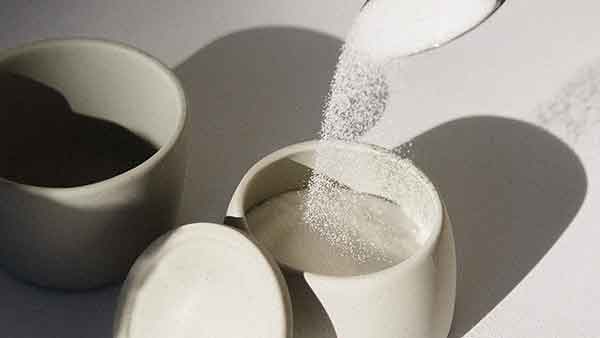The scientific view of sweeteners
“Sugar” is an indispensable spice in life, but excessive consumption can also lead to a series of diseases. As people pay more attention to diet and health, food companies have launched “sugar-free” beverages, bread, yogurt, and other foods. Replaced sucrose, fructose, and other easily absorbed spices with sodium saccharin, erythritol, maltitol, and other sweeteners. They are also known as “sugar substitutes”.

What is a sweetener?
Sweetener is a food additive that can make food sweet. Its functions in food are reflected in the following three aspects:
1. Make the food have a suitable taste;
2. Change and enhancement of flavor;
3. Flavor formation.
What sweeteners are like?
1. High sweetness.
Most sweeteners are tens to thousands of times sweeter than sucrose, so only a very small amount to get the right sweetness.
2. Low energy.
Sweeteners often provide no or less energy, and people can enjoy a sweet taste while significantly reducing their energy intake. At the same time, diabetic patients and those with impaired sugar function regulations can eat it due to its small blood sugar response.
3. Can reduce the risk of dental caries caused by sugar intake.
Xylitol is a common sweetener that can inhibit the growth of oral bacteria and reduce the probability of dental caries. Dental caries is caused by the erosion of oral microorganisms, especially Streptococcus mutans. Streptococcus mutans can decompose sugar but cannot use xylitol, so xylitol is used instead of sugar. By reducing the food of Streptococcus mutans, and dental caries will be reduced accordingly.
Sweeteners commonly used

Steviol glycosides (Stevioside, Stevioside)
Steviol glycosides are natural sweeteners extracted from the plant Stevia. About 200 times sweeter than sucrose, and taste very close to sucrose. Steviol glycosides are commonly used in beverages, baked goods, yogurt, sauces, desserts, and confectionery. The calories of steviol glycosides are about 1/3000 of that of sucrose, and they do not take part in human metabolism, so they can be eaten by patients with diabetes, obesity, and cardiovascular disease.
Sugar alcohols
Sugar alcohol sweeteners are derivatives of sugar. Lots of different products have been developed including sorbitol, mannitol, maltitol, lactitol, xylitol, etc. Its sweetness is about 25% to 100% of sucrose. Sugar alcohol sweeteners provide less energy than sugar, do not cause a significant glycemic response, and can significantly reduce the risk of tooth decay. Mainly used to sweeten sugar-free candies, cookies, and chewing gum.
Acesulfame K (AK Sugar)
Acesulfame potassium is a non-calorie sweetener. It is about 200 times sweeter than sucrose and has a good taste. Acesulfame K has been used in confectionery, baked goods, frozen snacks, beverages, dessert mixes, and tabletop sweeteners since 1988. It can not only be used as a sweetener, but also can be used in combination with other sweeteners to increase sweetness and improve product flavor. Acesulfame K is not involved in metabolism in the human body and is quickly excreted, so it is often used to produce sweets for diabetics.
Aspartame
The sweetness of aspartame is about 150~200 times that of sucrose, and it provides very little energy. It used in beverages, desserts, candies, dairy products, cereals, canned fruits, ice cream, etc. Aspartame is broken down in the body into aspartic acid and phenylalanine and trace amounts of methanol, which are naturally found in fruits, vegetables, meat, and eggs. Yet, it should be noted that patients with phenylketonuria cannot metabolize phenylalanine, and aspartame-added beverages and food labels will state accordingly.
Sodium Saccharin
Sodium saccharin is a synthetic sweetener that is about 300-500 times sweeter than sucrose. Sodium saccharin does not take part in human metabolism, does not provide energy, and can be eaten by diabetic patients. It is widely used in food processing such as canned food, pickles, juice (flavored) beverages, modulated milk, and flavored fermented milk. Sodium saccharin is used in the following foods: fruit juices, chewing gum, zero-calorie carbonated beverages, dairy products, nutritious snack breakfasts for diabetics, baked and confectionery products.
Besides the production of food, the substance is used in the pharmaceutical industry for the manufacture of anti-inflammatory and antibacterial drugs, and in the chemical industry for the production of laser printers, adhesives for rubber machines, toners for color printers, herbicides, and fungicides. In toothpaste and mouthwashes, saccharin plays a direct role – to make it sweet.
RECENT POSTS
ANY QUESTIONS?
Thank you very much for visiting our website. If you have any further questions or requests, please do not hesitate to contact us.
Send us an e-mail and you will receive an answer shortly.
